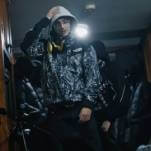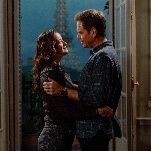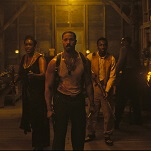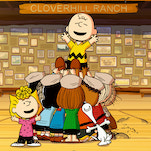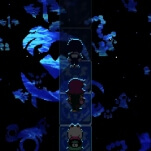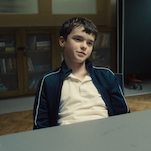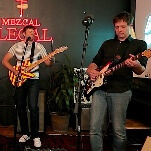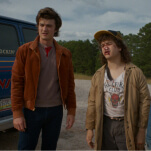The devil is in the implications for The Conjuring: The Devil Made Me Do It
The scariest thing about the Conjuring sequel is its ties to satanic panic
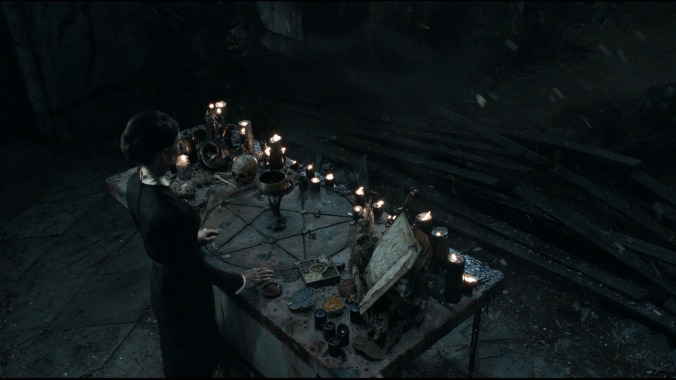
Note: This article discusses plot points from the film The Conjuring: The Devil Made Me Do It.
Satan has made quite the comeback. The past five years have seen a wave of satanic themes in popular culture—mostly in horror movies, but also lighter fare like Netflix’s Chilling Adventures Of Sabrina and Lil Nas X sliding down the stripper pole and onto the dark lord’s lap. The majority of these stories treat the devil as a symbol: A kitschy reference (Satanic Panic), a hellacious rebel (The Devil’s Candy, We Summon The Darkness), a sympathetic liberator of the oppressed (The Witch), or some combination of the three. In this way, pop culture is catching up with the beliefs of actual satanists, the majority of whom don’t believe in Satan as a literal entity to be feared or worshipped. Not so The Conjuring: The Devil Made Me Do It, a movie that’s as deathly serious as The Louvin Brothers when they sang “Satan Is Real” in 1960.
Although the possession subgenre is inherently Christian—if demons are real, then therefore so is God—The Conjuring’s literal-minded approach has always made it especially so. As A.A. Dowd wrote in his review of the latest entry, in these films “good is good, evil is evil, and the difference can’t be missed,” and it can’t be denied, either. There’s a holy war going on, and Bible-thumpers Ed and Lorraine Warren (Patrick Wilson and Vera Farmiga) are on the front lines. Join, or burn. This fire-and-brimstone subtext remained just that when the fictionalized Warrens were battling ghosts; you don’t have to believe in the holy trinity to feel the hairs standing up on the back of your neck in a creepy basement. Even the witch’s curse in the series’ first film went down several centuries prior, giving some much-needed distance between spell and scare.
But while restless spirits are a relatively agnostic phenomenon, The Devil Made Me Do It changes up the formula to make the villains a former priest disillusioned with the Catholic Church and his daughter, a malevolent witch known only as “The Occultist.” In the film, the duo are members of the Disciples of the Ram, an in-universe reference carried over from the Annabelle movies. But Baphomet statues and satanic imagery run through the movie, and it isn’t a far leap from a ram to Satan himself. And while ghosts don’t come up often in the culture wars, Satan does. By making the antagonists of the film human, The Devil Made Me Do It places blame for the evils of this world squarely on this side of the veil. That type of thinking leads to scapegoating and persecution—and the decade in which the film is set provides us with a sobering real-life example.
In 1980, a bestselling book called Michelle Remembers alleged the widespread existence of satanic cabals dedicated to traumatizing children. Its author, Michelle Smith, claimed to have recalled suppressed memories of being forced into a satanic cult by her mother with the help of psychiatrist Lawrence Pazder; setting the tone for what soon became known as the “satanic panic,” Smith’s tales were lurid almost beyond belief, describing graphic acts of murder, cannibalism, and child abuse. No evidence was ever produced to support any of Smith’s claims, and the method Pazder used to produce them—putting Smith under hypnosis and asking leading questions that prompted her to “remember” events later found to be influenced by pop culture and Pazder’s religious beliefs—is controversial. As late as 2013, an article by Dr. Richard Noll dismissing the concept of “satanic ritual abuse (SRA)” was subject to no less than three rebuttals from mental health professionals who refused to deny SRA in print.
At the time, Smith and Pazder’s claims were subject to even less criticism. What resulted was a widespread moral panic, fueled by combination of overzealous law enforcement, religious hysteria over heavy metal and Dungeons & Dragons, growing fears about “stranger danger,” and careerist psychiatrists hungry for publicity. Pop-cultural artifacts from the era, like Geraldo Rivera’s infamous 1988 special Devil Worship: Exposing Satan’s Underground and the supremely fucked up children’s picture book Don’t Make Me Go Back, Mommy: A Child’s Book About Satanic Ritual Abuse are laughable now. But for those who were falsely accused of murder and pedophilia by misguided zealots convinced of the existence of a global network of satanic day care centers, the damage was real.
It took 21 years for Dan and Fran Keller, the owners of a daycare facility in Austin, Texas who were falsely accused of ritually abusing their charges in 1991, to clear their names and be released from prison. More than 30 people were convicted in Kern County, California, where a sexual abuse case spiraled into a massive conspiracy theory fueled by one woman coercing her grandchildren into reporting nonexistent horrors. And let’s not forget the infamous McMartin preschool trial in California, where a social worker asking leading questions convinced dozens of children to testify that they had been abused in occult ceremonies led by the owner of the school, an elderly woman named Peggy McMartin, and her son Ray Buckey. That case dragged on for seven years before charges were finally dropped. But perhaps the ultimate example of the real-world consequences of the satanic panic is the West Memphis Three, whose case is profiled in the Paradise Lost documentaries (among others).
Although—unusually for the publicity-hungry opportunists—the real Ed and Lorraine Warren were never involved in a satanic day care case, it should come as no surprise that they are connected to the satanic panic. That’s largely through the trial of Cheyenne “Arne” Johnson, dramatized in The Devil Made Me Do It. In the film, we see Johnson’s lawyer, shaken after an offscreen encounter with the Warrens’ menagerie of malevolent toys, offering up a plea of not guilty by reason of demonic possession. From there, the trial drops out of sight, only reappearing at the end when Johnson being sentenced for manslaughter. In fact, the film goes out of its way to avoid what could have been its most interesting theme: “What does it do to the whole system of the law,” as a talk show host asks the real Ed Warren in a mid-credits archival clip, if anyone can say that a demon was responsible for their actions? How do you prove something like that?


